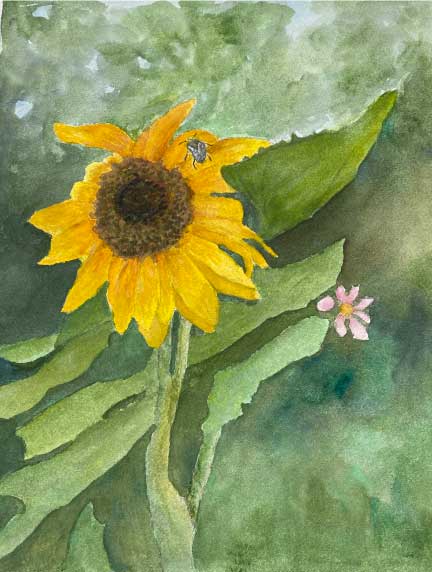
Watercolor on paper, 9″x12″, by Evy Okerstrom, unframed, contact me if interested
In April, we are heading back into urban sketching with Marc Taro Holmes book “The Urban Sketcher”. After exploring different options, the class chose this guide for its practical techniques in observing and sketching on location. It includes chapters on the use of pen, ink, and watercolor. Join us Wednesdays starting April 3rd at Trinity Lutheran Church from 1 pm to 4 pm. We will start each week with a lesson related to the book, and then practice some exercises or we may go to various locations to get more sketching experience. Students are encouraged to bring a project to work on and various mediums to experiment with. The cost of the class is $25 per session. Contact me at eokerstrom22@gmail.com with any questions.
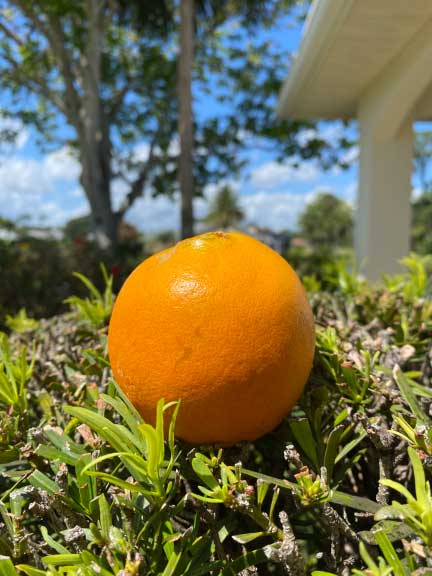
Image of an orange to deconstruct into an abstract form
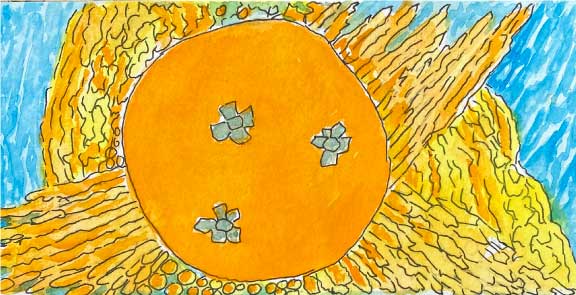
Image of orange abstracted
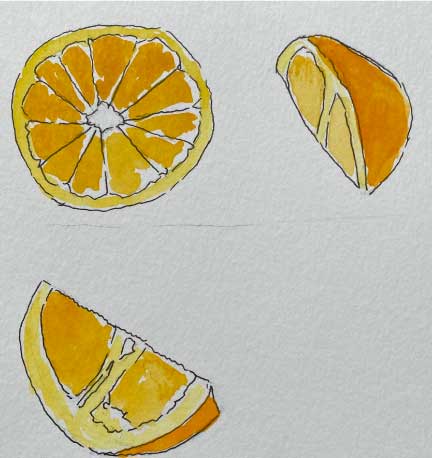
Image of orange shapes and forms
March ended with us finishing the exploration of expressionist colors and abstract art in the Annette Compton book. We worked on a range of exercises suitable for all skill levels. It is hard to get your head around abstract painting when you are used to painting and thinking realistic. The class was ready, and came up with some great images. The Compton book will continue to be a good reference for watercolor artists.
As we transition to other sketching with watercolor, pen and ink classes, I will share with you some of our past exercises, including a captivating Sunflower piece inspired by one of our classes on negative painting. The reference photo, taken by me was in my family’s garden in Maine.
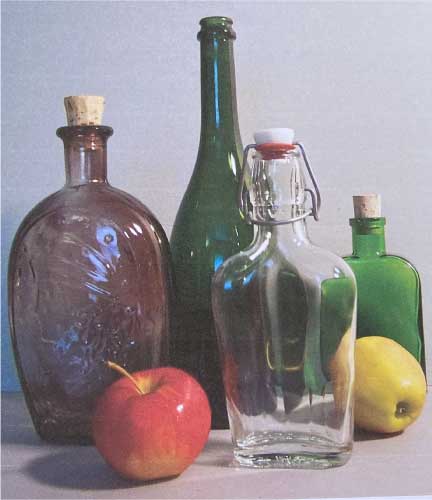
Image of still life to use for abstraction exercise
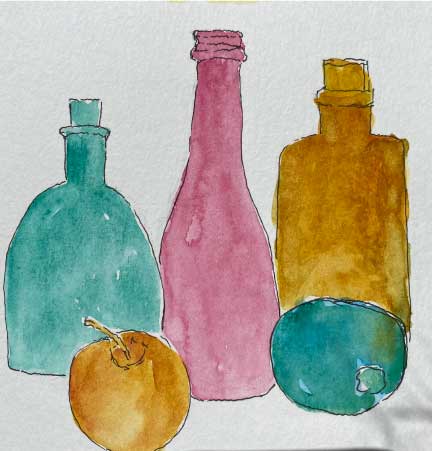
Image of still life made into form shapes
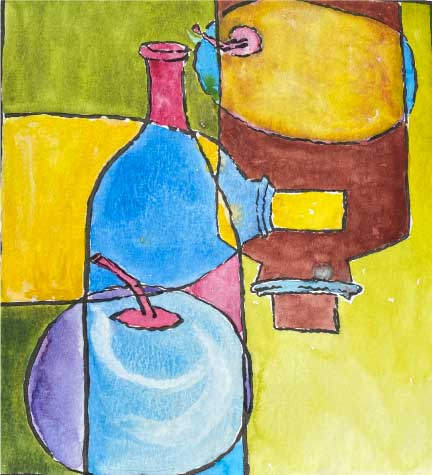
Image of still life abstracted
Thought of the day… “A wet shape you have just painted can be thought of as alive. As long as it remains damp it is active, wanting to move. Unless you disturb it, it will sit in a puddle, waiting for an opportunity to flow. On a fresh white sheet, it is surrounded by an area of dry paper that is dead, inert. Watercolor pigment will never cross the wet/dry (alive/dead) edge. The moment it reaches the dry paper, it abruptly stops moving, piling up along the dry border, forming a sharp edge. “
Marc Taro Holmes, “The Urban Sketcher”, Page 93, Chapter 3, Watercolor: Bring Sketches to Life with Watercolor.
